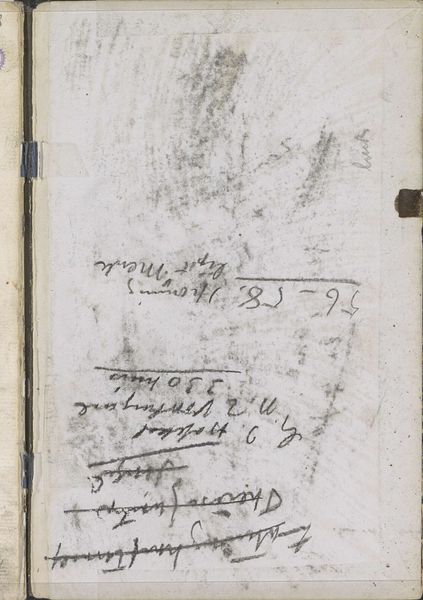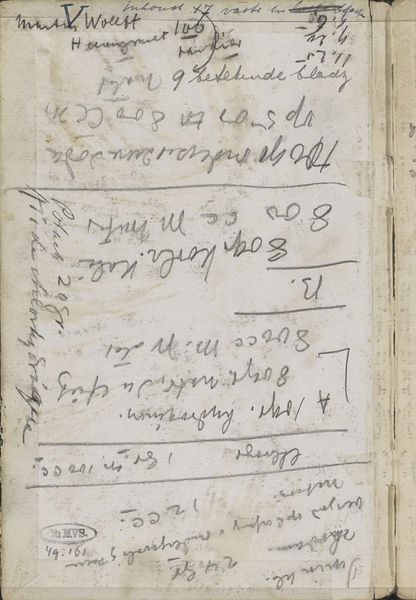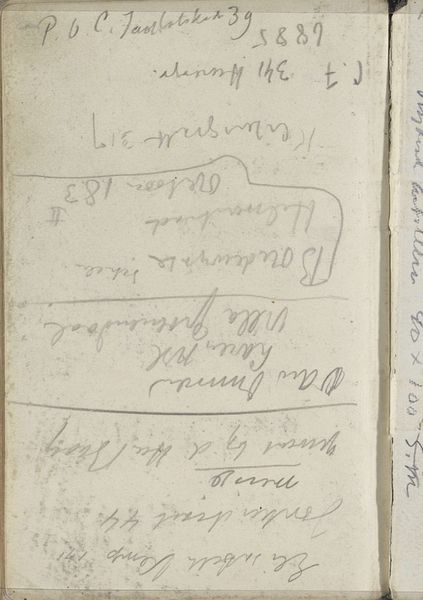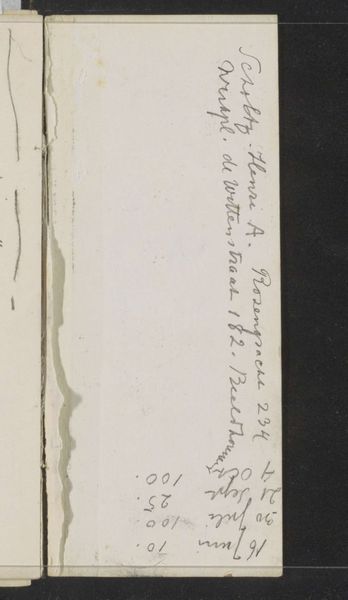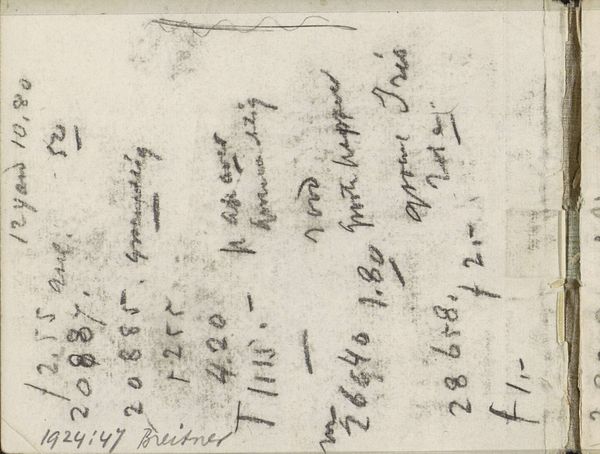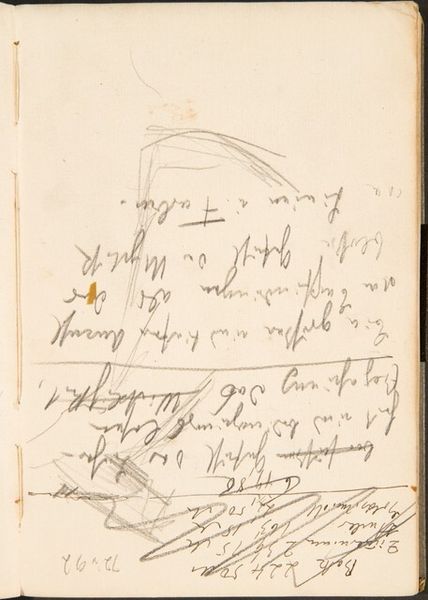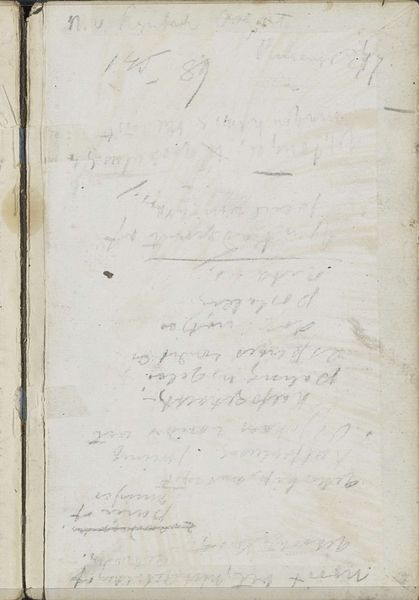
Copyright: Rijks Museum: Open Domain
Curator: I’m struck by the fragility of this piece. It’s so delicate and raw. Editor: Indeed. What we're looking at here is "Annotations" by George Hendrik Breitner, created between 1886 and 1898. The piece, held at the Rijksmuseum, is a drawing executed with pencil on paper. It almost seems like a glimpse into Breitner's private thoughts, a kind of visual stream-of-consciousness. Curator: Yes, exactly. It feels like we’ve stumbled upon a page torn from a private sketchbook. There are these smudges and faded lines—do you get the sense he's searching, almost frustrated, trying to capture fleeting moments? Editor: Absolutely. The scribbled notes amidst the impressions offer a glimpse into the artist's mind and maybe reflect the urbanization processes ongoing in Amsterdam, marking a time when written forms became intertwined with modern identities. This, combined with an unfinished aesthetic, could signify an alienation with conventional societal practices, in his refusal to adhere to stringent representational practices. Curator: You know, it's funny, looking at it, I almost get seasick, but I adore that feeling. The impressionistic touches and obscured layering of information seem chaotic, but, like Amsterdam itself, there is a delicate sort of control being exerted. I feel pulled to reflect on what notes and musings I make as I traverse through life! Editor: I see what you mean, it makes one question whether the imposition of perfect control is needed to portray what the work could embody: resisting total legibility is as much part of the art piece as the work it took to produce it. Curator: Well, I suppose this makes me reflect on the value in showing the in-between spaces as artworks themselves. It's less about a single, polished statement and more about a visual diary entry of thought itself, isn't it? Editor: Precisely. And I think, to that point, the choice of such simple materials - pencil and paper – further democratizes the artform by insinuating anyone can partake. The piece beckons audiences to also reflect on their immediate environments and identities.
Comments
No comments
Be the first to comment and join the conversation on the ultimate creative platform.

